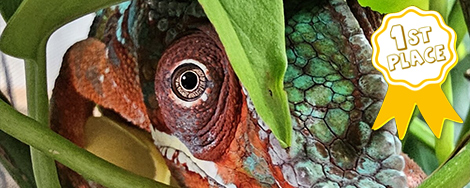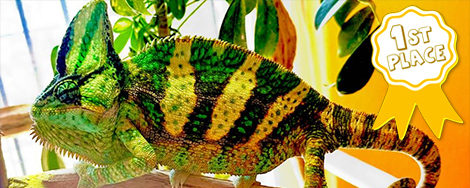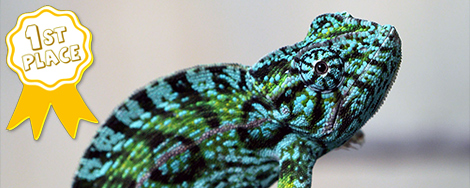Navigation
Install the app
How to install the app on iOS
Follow along with the video below to see how to install our site as a web app on your home screen.
Note: This feature may not be available in some browsers.
More options
You are using an out of date browser. It may not display this or other websites correctly.
You should upgrade or use an alternative browser.
You should upgrade or use an alternative browser.
Home Page
Recent Discussions
- Replies
- 11
- Views
- 208
- Replies
- 12
- Views
- 159
- Replies
- 0
- Views
- 44
- Replies
- 2
- Views
- 88
Did You Know?
Chameleons have a very poor sense of smell.
Some chameleons play dead to avoid predation; this is called thanatosis.
The word Furcifer is derived from the Latin word “furci” or forked.
Many chameleon species have a bright red, orange or yellow mouth. This conspicuous interior when displayed is used as a defense against predators.
The oldest known chameleon fossil is from the extinct species Chamaeleo caroliquarti. It was found in Europe and is 26 million years old.
Pygmy chameleons are sometimes referred to as False Chameleons. This term is actually incorrect and is in reference to anoles, particularly the Cuban False Anole.
The process of shedding is called ecdysis.
The smallest chameleon species is Brookesia micra with an adult length just over 1 inch (29mm). It hatches from an egg no bigger than a grain of rice!
Kinyongia uthmoelleri and Trioceros quadricornis gracilor have red claws.
The word Bradypodion comes from the latin “bradus podos” or slow foot.
We love our sponsors
- Chameleons Only
- Mist King
- Tortoise Supply
- Great Lakes Hornworm
- LLLReptile
- Mulberry Farms
- Chameleon Paradise
- Coastal Silkworms
- Dubia Roaches
- Dragon Strand
- Chamelicious Chameleons
- Full Throttle Feeders
- Gulf Coast Silkworms
- Chromatic Chameleons
- Sticky Tongue Farms
- The Critter Depot
- Mantis Place
- Rebecca Wang Art
- iPardalis
- Rainbow Mealworms
- FramsChams
- Light Your Reptiles
- Neptune the Chameleon
- Tamura Designs
- Ready's Rainforest
Featured Blog Entries
-
World Chameleon Species Tour: Trioceros pfefferi
- DeremensisBlue
- Views: 5K
- Reaction score: 23
- World Tour
Welcome to another installment of our World Chameleon Species Tour! Today we are in the Cameroon highlands with Trioceros pfefferi. Natural... -
Jackson's Chameleon Articles and Studies
- JacksJill
- Views: 60K
- Reaction score: 15
- Comments: 6
- General
I'm always trying to find these links for people. Now anyone who is interested in knowing more about Jacksons chameleons can find them here... -
Individual Baby Cages or Caging during the time of Covid
- JacksJill
- Views: 29K
- Reaction score: 11
- Comments: 8
- General
My first prototype I was planning on using Exo-terra Nano glass cages for my baby cages but the supply chain issues we are all too familiar with...
Trending Topics
-
Getting a Cham soon, what supplies and brands should I use?
- Started by All_Things_Scaly_Lover
- Replies: 12
-
Gravid Veiled Chameleon may be having trouble laying her eggs
- Started by Triple M's
- Replies: 59
-
-
-





